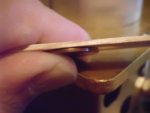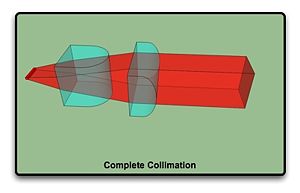The expander objective is 25.4mm "1 inch" wide and my beam is 6.5mm wide as corrected by a 6x cyl pair, the diode is a nubm44, the expander is a 3.3x, I am all for finding new ways but I am still learning lenses.
Ok, the beam after correction is 6.5mm wide. you have an objective which is 25.5 mm in diameter. Is this objective a positive lens or a negative lens? If positive what is the focal length? If positive what type of lens is it? What is the focal length of the other objective
LSP is laser show parts.
I
I think I may need a wider expander for the 44 to use the standard G2 but with Podo's it works, maybe I need to adjust a bit as to my cyl pair position to the lens.
Forget about the G2 lens, the focal length is much too short for your application as is its diameter. Your beam is already 6.5mm in diameter. You need lenses with a greater diameter than the beam in order not to truncate the beam.
Last edited:







